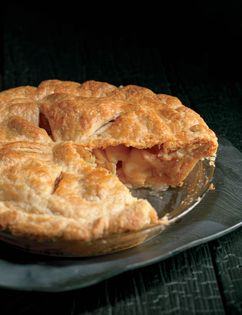Advertisement

Preparation info
- Serves
8
- Difficulty
Medium
- Ready in
45 min
Appears in
Published 2014
A commenter on my blog came up with the idea to add thickened apple cider to the apples in an apple pie to make more sauce in the filling—a request from her husband. I tried the idea and love the luscious texture and added flavor the apple cider gives to the apples. I still like to concentrate the apples’ juices to keep the bottom of the crust from getting soggy and to add a wonderful caramel undertone to the filling.


